The Australian Shepherd Lab mix, or Aussiedor, is a cross between a purebred Labrador Retriever and a pedigree Australian Shepherd. They are a medium to large sized dog with a fairly short coat that sheds seasonally and needs regular brushing. With a working background on both sides, this active mix tends to be intelligent and trainable, but with a slightly more whimsical and distractible personality. Agility, tracking, herding, search and rescue and retriever training are all great ways to focus their energy and make use of their incredible intelligence and drive.
Contents
- Australian Shepherd Lab mix history
- Aussiedor appearance
- Australian Shepherd Labrador Retriever mix temperament
- Training and exercising your Labrador Australian Shepherd mix
- Australian Shepherd Lab mix health and care
- Australian Shepherd Lab mix puppies
This mix is a smart, high-energy, high-shedding ball of fun. They require socialization due to guarding tendencies, and have some potential for inherited health issues, but they also have all the earmarks of a great pet. Today we will take a look at the pros and cons of the Australian Shepherd Lab mix. We’ll see what you can expect from their health, temperament and looks.
Origin Of The Australian Shepherd Lab Mix
The exact origin of the Labrador Australian Shepherd mix, like most mixes, is impossible to pinpoint. We do know more about the origins of the parent breeds. If you have a first generation Aussiedor, then her origins really start with Labs and Aussies. Even if your mixed pup is second generation or beyond, the history of the parent breeds can heavily inform the makeup of the individual dog.
The Lab’s earliest ancestors were small-sized dogs that were trained to retrieve waterfowl. These retrievers were later mixed with Newfoundlands to produce the classic Lab that we recognize now. They are prized as hunting partners, service dogs and of course family pets.
Aussies descend from sheep-herding dogs that are believed to have originated in the Pyrenees Mountains in Spain and France. However, the Australian Shepherd that we know today was refined in the United States. Today, Australian Shepherds are still used for herding in some areas, but many of them are beloved farm dogs. They accompany their owners on trail rides or farmers who are working crops. They are also popular family pets. Especially for people with small children and good-sized yards that allow games of fetch and chase!
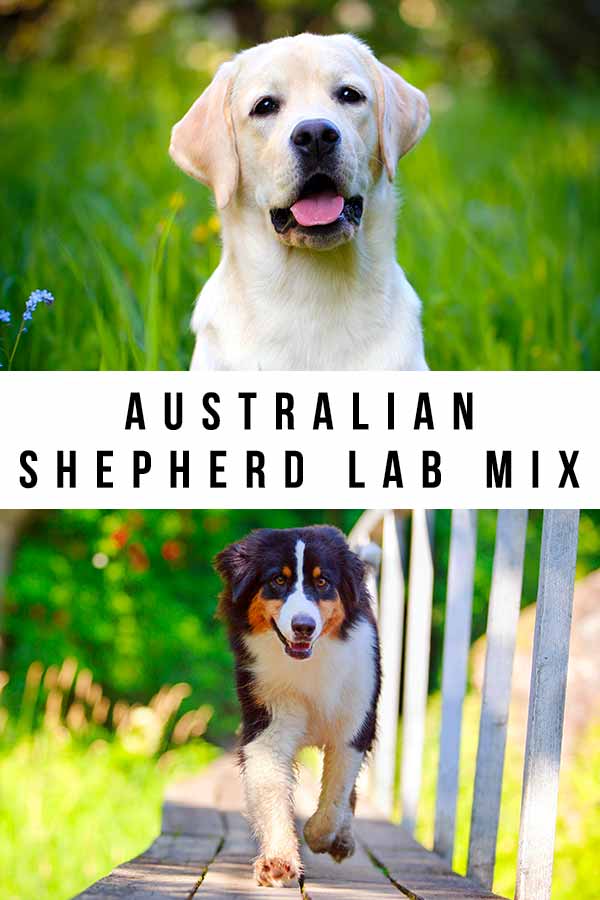
What To Expect From An Australian Shepherd Lab Mix
Learning about the parent breeds can help us to understand the possible temperament, behaviors, and appearance of a mixed breed like the Aussiedor. It’s important to have as much information as possible. But even with all that, it’s impossible to say for sure which traits an individual dog will inherit from which parent. For this reason, it’s a good idea to keep in mind the variety provided by both parent breeds, realizing that your Australian Shepherd Labrador Retriever mix will fall somewhere in that range.
Australian Shepherd Lab Mix Appearance
Australian Shepherds are typically 18-23 inches tall. Labs are a little taller, ranging up to 24.5 inches at the shoulder. Aussies can range between 40 and 65 pounds, and Labs are usually slightly bigger, ranging from 55 to 85 pounds. A Labrador Australian Shepherd mix will likely be a medium-sized dog, falling somewhere in the range of the parent breeds. They have sturdy, athletic frames and happy wagging tails.
Aussiedor Coat Colors
Both parent breeds come in a small range of colors, so there’s no guarantee what color your mixed pup will be. The only certainty is that you won’t have a first generation Aussie Shepherd Lab mix that inherits the merle coloring from the Australian Shepherd parent. Labs don’t come in merle, so the mixed pup can’t inherit from the Labrador parent. What are some other options?
Black Lab Australian Shepherd Mix
You may think that a black Lab Australian Shepherd mix would almost certainly inherit the coloration of the Lab parent, but there’s no guarantee of that. A black Lab Australian Shepherd mix, for example, could have the dark fur of the Lab parent, the generally lighter solid coat of the Australian Shepherd, or a multicolored coat like many Aussies.
Australian Shepherd Chocolate Lab Mix
What about an Australian Shepherd chocolate Lab mix? Chocolate Labs are perhaps the most popular color variation in the very popular Labrador Retriever breed. So it isn’t surprising that some Aussiedor owners may look specifically for an Australian Shepherd chocolate Lab mix.
But just as with the black Lab Australian Shepherd mix, no one can promise that your Aussiedor will have a chocolate coat. On top of that, chocolate Labs have a recessive gene, making them a more rare coloration. So it may be difficult to find the exact combination that you’re looking for.
Australian Shepherd Yellow Lab Mix
A final variation on the classic Lab coloring possibilities is the Australian Shepherd yellow Lab mix. Yellow Labrador Retrievers are more common than chocolate Labs, but not as commonly seen as black Labs. So you may still find it tricky to track down an Australian Shepherd yellow Lab mix. Even if you do, there’s still a good chance that the Aussie Shepherd Lab mix that you find won’t exhibit the coloration you’re hoping for.
Ultimately, whether you find a black Lab Australian Shepherd mix, an Australian Shepherd chocolate Lab mix, or an Australian Shepherd yellow Lab mix, the exact coloration is impossible to guarantee.
Australian Shepherd And Lab Mix Shedding
Labs are well-known for their tendency to shed. Australian Shepherds also have something of a reputation, so your Labrador Australian Shepherd mix will shed prolifically.
Aussiedor Grooming
An Aussiedor may inherit its Labrador parent’s short double-coat or its Aussie parent’s thick and medium-length double-coat.
The Lab’s short double-coat requires weekly grooming and more during shedding season. However, an Aussie double-coat will require a good bit more maintenance. You might consider using a slicker brush to prevent the coat from tangling, to get rid of dead hair, and to remove whatever debris that your pup picks up during the work or play day.
This dog will need weekly brushing at minimum; an Aussiedor with an Aussie-type coat might benefit from regular trips to the groomer to keep his fur from matting.
Australian Shepherd Lab Mix Temperament
When it comes to temperament, the Australian Shepherd and Lab mix is most likely going to be a handful for novice dog owners. Labradors and Australian Shepherds are “busy body” breeds that thrive on work. If they aren’t working, then lots of play and training will be necessary to keep them from getting into trouble.
Both Labradors and Australian Shepherds are high-energy dogs that were bred to work. However, outside of that, their temperaments aren’t completely identical.
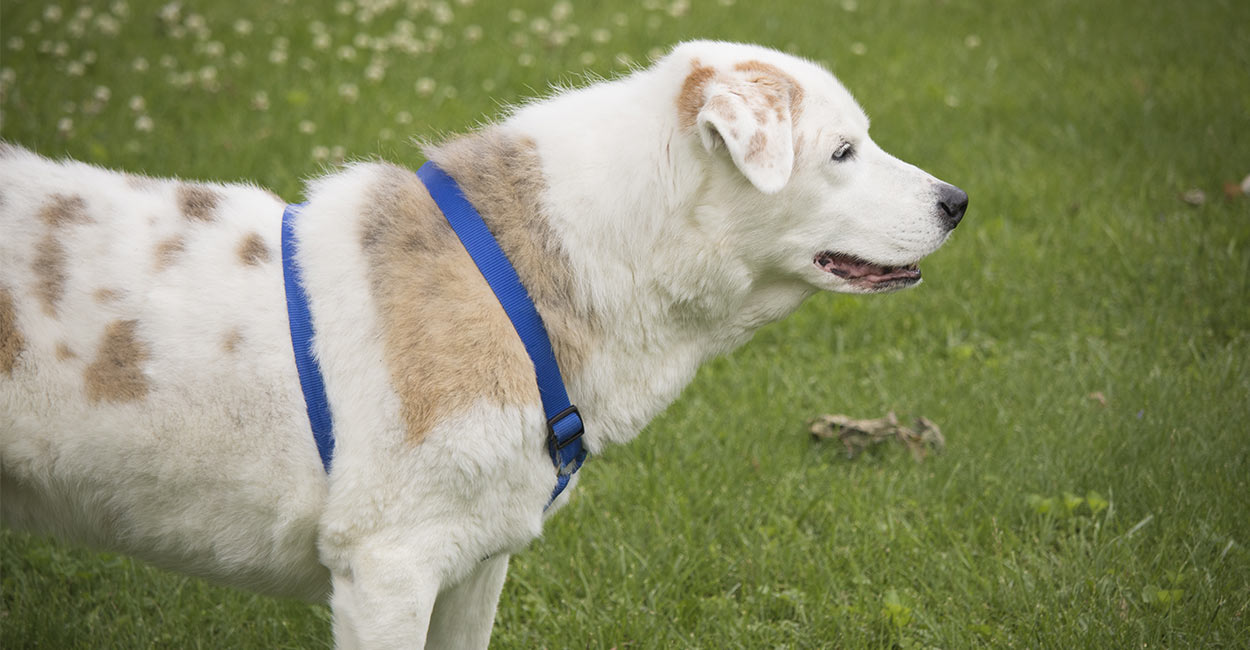
Australian Shepherd Lab Mix Personality
Due to their strong herding and thus guarding instincts, some Australian Shepherds can be protective of their families. This may make them shy or a little bit aggressive around strangers. Socializing an Aussie from a young age may reduce the chances of their guarding instinct from showing up later.
Conversely, Labrador Retrievers are usually NOT shy or reserved with strangers or other dogs (although a few individuals may be so). They are generally very smiley and happy dogs that love anyone who will give them attention.
Knowing whether an Aussiedor will act more like a Labrador (possibly a bit jumpy and prone to following her nose) or an Australian Shepherd (very jumpy and possibly prone to nipping at heels) is a coin toss. With all hybrid dogs, especially when you’re dealing with a first-generation mix, you cannot predict with accuracy which parent the hybrid puppies will look and act like or if they will display a mix of characteristics.
Socialization
Socialization is important for all breeds, really. Training your dog to react well in new and different circumstances is part of raising a happy, well-behaved pet. With the potential for guarding behaviors and shyness that could come from the Aussie parent, it’s even more imperative that you make sure to socialize your Australian Shepherd Labrador Retriever mix from a young age.
Introduce your pup to different environments, people of all ages, and other animals. This will cut down on anxiety and let them know that they don’t have to worry if they come across an unfamiliar scent, face, or location.
Training And Exercise
Australian Shepherd Lab mix training is best carried out with positive methods. From day one, reward behaviors you want to see, like calmness, ignoring the wildlife and not jumping up. Keep that buy brain occupied.
This mix is not a lap dog or a couch potato. They need lots of interaction and play time in order to be happy and both physically and mentally healthy.
Exercise Requirements
This mix will do well with a fenced-in yard for play time, but they will truly thrive on a farm or larger property that will give them a job to do. They are people-pleasers who will love being your best mate or farm hand! They’ll enjoy going for walks, runs, bike rides, and swims along with their owners. However, they require thorough training and/or a fenced-in yard, as their powerful sniffer is likely to lead them astray!
Australian Shepherd Lab Mix Health And Care
Just like purebred dogs, hybrid dogs may also develop certain conditions based on their genetics.
Labrador Health
Labs are generally quite healthy for medium to large dogs, but they do have some potential for health problems, both inherited and acquired. Inherited issues include hip and elbow dysplasia and PRA.
Labs are also prone to other problems that may crop up along the way, such as obesity, ear issues, and skin allergies.
Australian Shepherd Health
Australian Shepherds can be prone to hypothyroidism, or autoimmune thyroiditis. Lymphoma is also unfortunately common in Australian Shepherd dogs.
According to a 2011 study published by the Journal of Veterinary Medicine, idiopathic (primary) epilepsy is commonly inherited in the Australian Shepherd breed. The condition usually presents within the first few months of the puppy’s life, and requires medication for life to control seizures.
The multi-drug resistance-1 (MDR1) genetic mutation prevents the dog’s body from removing certain drugs from the brain, and is common in sheepherding breeds. Dogs with the MDR1 mutation should not be given certain antibiotics, anti-cancer drugs, anti-diarrheal drugs, dewormers, pain medications, or tranquilizers.
Mix Health
Your Aussiedor could potentially inherit any of the health problems to which the parent breeds are prone. It’s more likely that they may inherit issues that both parent breeds face. Both Australian Shepherds and Labrador Retrievers are prone to hip or elbow dysplasia and cataracts. Make sure they both have good hip and elbow scores and a recent vet check.
The Lab parent should also be PRA clear.
Lab Shepherd Mix Life Expectancy
The average Lab lifespan is 10-12 years. Some sources suggest that the average Aussie lives between 12 and 15 years; however, one study found that the median age was closer to 9 years.
In general, mixed breeds live a little longer than purebreds. So you could reasonably hope for your Aussiedor to have a life expectancy near the latter end of this spectrum.
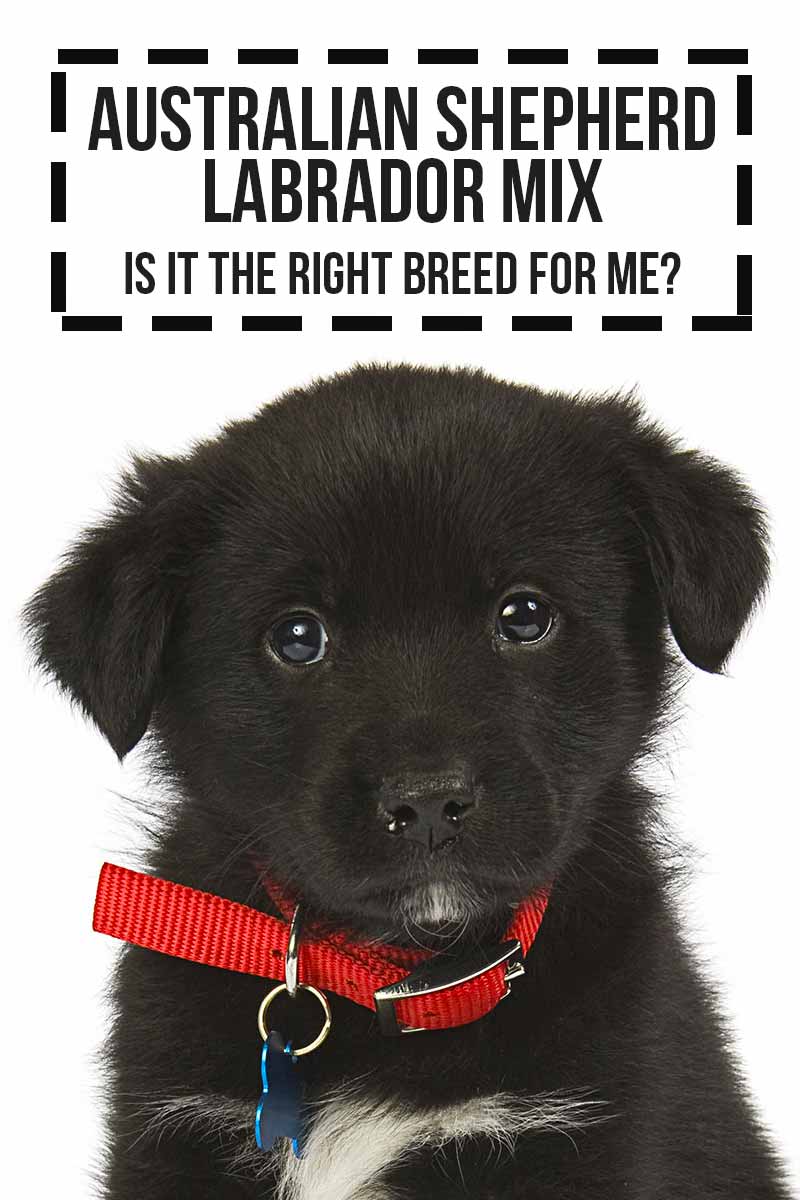
Shelter Dogs
Fully grown rescue dogs have more reliable temperaments. But you don’t know about their previous experiences.
When introducing a new adult dog into your home and neighborhood, be cautious around children and other animals until you can be secure in their behavior.
Finding An Australian Shepherd Lab Mix Puppy
As a mixed breed, they may be a little hard to come by. Especially when you wish to purchase a puppy from a responsible breeder who uses genetic testing. This doesn’t mean that Australian Shepherd Lab puppies aren’t available, but it does mean that you may need to be patient until you can find one.
Lab Australian Shepherd Mix Breeders
Mixed breeds are growing in popularity, but this particular mix doesn’t yet have the “it factor” of some other mixes, such as the Goldendoodle.
If you find a breeder that specializes in this mix, chances are that you’ll pay a couple hundred dollars for one. The exact amount that you pay may also vary based on the parent stock, how much they are worth to the breeder, and the number of puppies available. Make sure to avoid unscrupulous breeders, anyone who doesn’t readily answer questions and furnish the results of health tests, and pet stores.
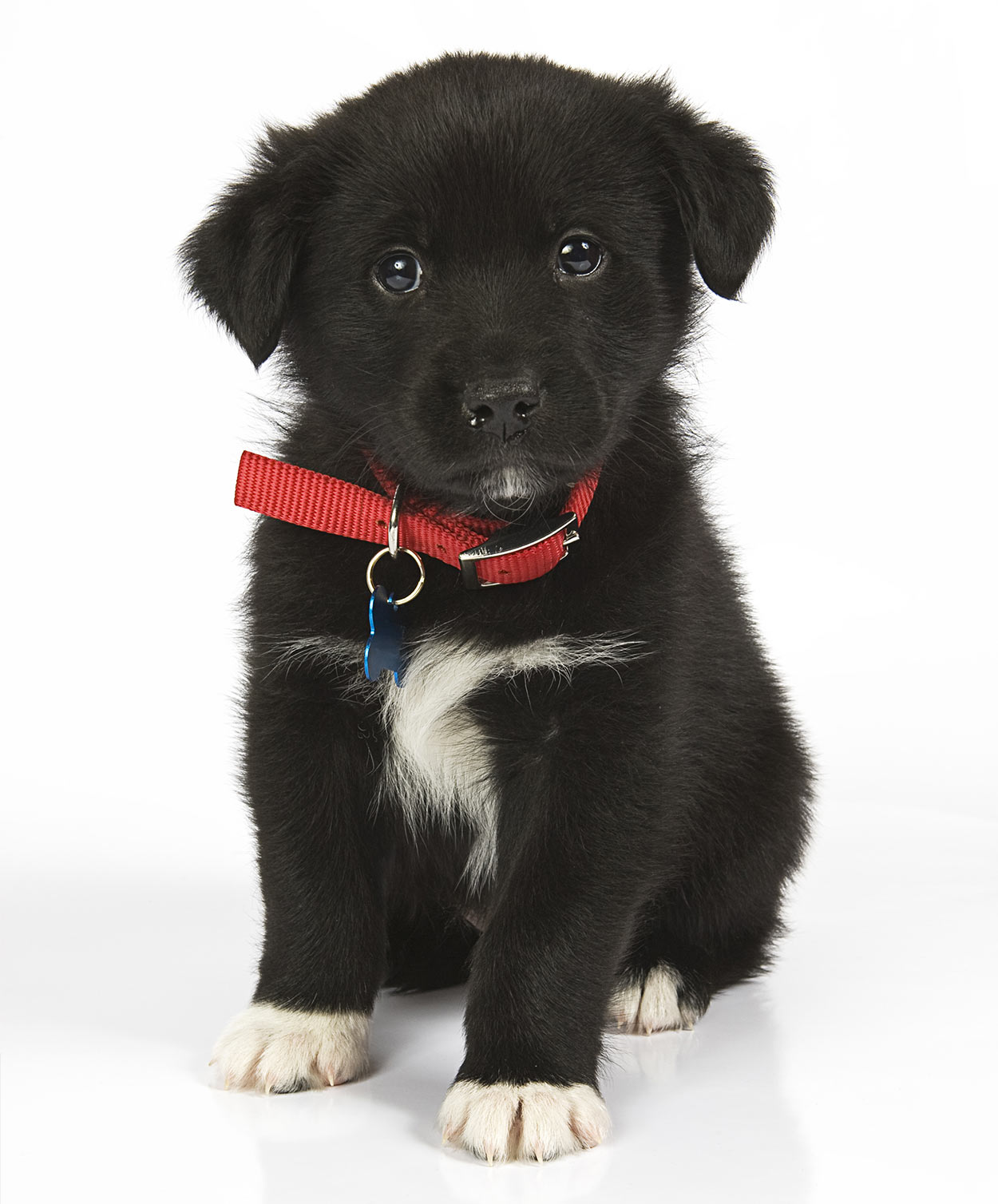
The Labrador Site Founder
Pippa Mattinson is the best selling author of The Happy Puppy Handbook, the Labrador Handbook, Choosing The Perfect Puppy, and Total Recall.
She is also the founder of the Gundog Trust and the Dogsnet Online Training Program
Pippa's online training courses were launched in 2019 and you can find the latest course dates on the Dogsnet website

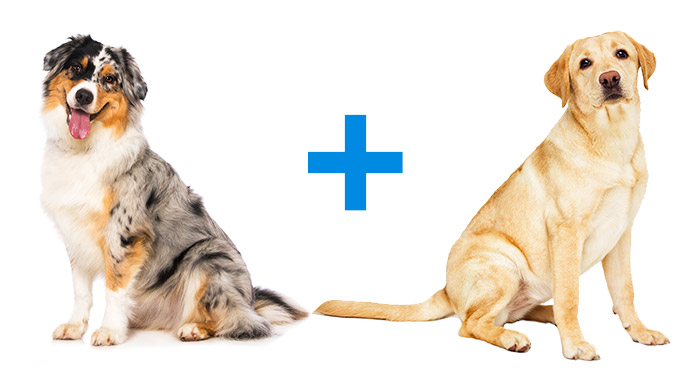
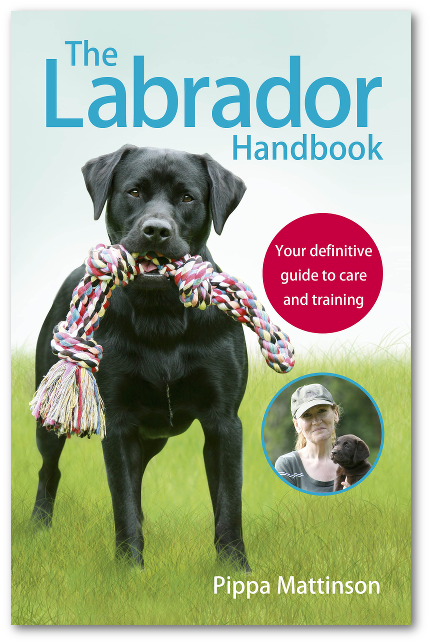




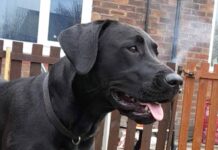
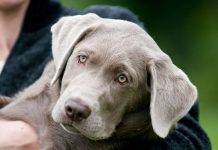
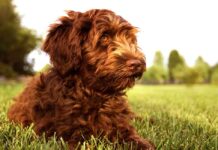
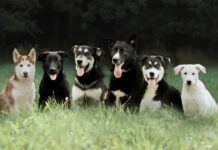









My 15 year old Lab / Australian Shepherd just passed. He was the most laid back adaptable creature I have ever come in contact with. He showed his teeth less than 10 times in his 15 years. He was in 4 fights, one offensive, an off leash dog jumped on my 7 month old puppy. He held the dog down until its owner arrived. He was an incredible swimmer, loved to fetch, destroy stuffed animals and could chew through anything. ‘Tough animals’ meant nothing to him. He would jump and latch onto a tree limb to get a stick for me to throw when there was snow on the ground. In my opinion he was slightly above average intelligence wise. If you are considering an Australian shepherd / lab mix be prepared to exercise it. We would walk 5 – 7 miles off leash in the forest, come home and want to play fetch for an hour. These dogs will find a way to blow off energy. You need to commit to a dedicated hour a day for 12 – 13 years. I would come home from work and throw the ‘blue thing’ (Orka Jack) over the roof of my house for an hour daily. Rain, snow, sleet, high humidity or scalding temperatures didn’t exist. An excellent family dog who will become a loving member of your family or your best buddy if you are looking for a companion.
So sorry for your loss, your dog sounds like a wonderful character.
I have a black Aussiedor I got her as a puppy. We named her Mollie. Mollie’s puppy year were full of excitement (closes example I have every seen is Marley and Me ). Mollie has been the best girl ever ! The was protective over me during my pregnancy and gently no nipping herded my kiddo and neices and nephews when they were toddlers. Mollie isnt overly vocal and can be quiet nervous around strangers. She lets them know she there but mostly keeps her distance or get near me. My only complaint is she is food aggressive not towards me but anything else is fair game. Mollie will be 14 in July I love my girl and wouldnt trade those crazy years for anything.
Skipper aka Lincoln chose me. His owners had left him behind- apparently both owners were facing jail time in Missourri State. So- the father who had rented his extra property to his son was granted caretaker. He claimed he fed him for two days after son and his gf went to serve time for a car theft (rumor has it) and then disappeared. However- I am our neighborhoods tnr feral, dumpee, lost cat lady and had noticed for 2 weeks Lincolns driveway housed no cars. I was wondering why the cars were always gone.
I’m almost without a doubt certain he was dumped near my business property and made his way to me there (it would have been a slightly shorter trip had he just went to my house). So, I crowned him my shop dog. A tenant named him Skipper and he learned it very quickly. Another tenant swore we had seen the dog before. My son confirmed it was the dog around the corner from my house. He was always loose and had a bad habit of blocking traffic and herding a car or two (and the property owners mousing cats). I kept waiting for the property owner to show….
I finally ran into the father and owner as he feeds his community cats and does repair to his rental. Two weeks prior, Lincoln had escaped my shop area by getting under the residential side of my building through a missing floor panel. (Plumbing repair). He then got hit by a car I was told by a tenant. I told the father about the car hit and he awarded me full custody. Not a penny offered for his care, vet bill….I had told the man that when he does get a chance to speak with his son- that Im very angry with him for leaving his dog behind and the father was in agreement.
Surprisingly- Lincolns injury was not worse than it could have been- but he was definitely sore. Ace bandage (the sticky kind) was all it took and some rest. I kept him shop dog for almost two months while he healed. When I brought him home to meet the 3 pack, it was like he had lived here all his short life. (he will be a year old in a couple of months)
He’s still very much a puppy- however he’s a great watch dog, learns real fast, seems to understand what I talk with him about and is happy go lucky and loves to be loved, to sleep in a bed and when let out- to run and romp in his fenced backyard. Loves to play in water…lol. He is a handsome youngster and will need some training regarding my flock of chickens but I have no doubt he will learn quick. I can’t fathom leaving behind a furfamily member. No matter what. The father had told me he simply moved back to Missouri and didn’t take the dog. Anyway….
So Lincoln Skipper makes 4 dogs. He is also sibling to 16 cats (rescues, dumpees and 2 no longer feral cats). Such a loving loyal guy. Not sure which one of us is more lucky.
I was told by the property owner he was full blooded Australian Sheepdog but he appears to be Aussiedor- Blue Merle. I would have to say Lincoln reminds me of a Golden Retreiver in the personality/ characteristics department but more active like a young blue heeler or Jack Russell but without the hard headedness. I definitely know already the duo breed would be great for almost anyone. Just be prepared if this breed wants something- he will grab your wrist and make you get up. Be prepared to keep a towel or two around just in case they find a water source. Lol.
I have an 11 yo Aussie/lab mix. She was in an accidental litter between a very young chocolate lab mom and farm dog Aussie dad– I’ve had her since she was 8 weeks old. She has been a dream girl– super loyal, a great mix of independent and lovey, she LOVES people, not terribly interested in other dogs, but lives comfortably with two other girls (coonhound mix and a shar pei mix). Her coat has been pretty easy most of her life, but as she’s gotten older– especially the last 3/4 years the undercoat has gotten much fuzzier and needs more grooming. She only has arthritis at 11, no other health issues and her arthritis is well controlled with glucosamine supplements and occasional vetprofen if she overdoes it. At 11 she has terrific energy, still absolutely loves to play, and she is always ready for anything. She does sleep a lot more these days, and doesn’t just go hang out outside as much as she used to. She was super easy to train, her only vices are chewing up her toys, trash can piracy, and tricking the other dogs out of their toys. She is hilarious and amazing. Love her so so much 🙂
Trash can Piracy. Lol. Love it. Lincoln on occasion also snoop and snags from the garbage.
I need the address of an Aussie/Labrador Retriever. Thank you!
The best dog I ever had!
Looking for an Aussiedor breeder in CA. If anyone knows of one, I’d love the contact info.
I think our 4 year old shelter
rescue is an Aussiedor. Chance is 87 pounds of love. His fur can only be described as plush. He favors his yellow Labrador genetics for size, but has merle ears and head patches as well as blue eyes that may indicate Aussie mix. Does anyone know of genetic predisposition to luxating patella? Don’t know if his is injury related or genetic.
I have an Aussie and he won’t go for a walk. He gets excited to go then when we get to the front porch he turns around and wants to go back inside.
Chevy is our Aussiedor. He was free on FB at age 2 We had other rescues at home. He is trained with a few commands, loves to run with the other dogs that are a Cattle Dog, Mountain Cur, Black Lab and 2 smaller Wheaton Terriers. High energy but we have a large area fenced in. He is such a sweet natured dog, has longer hair and definitely sheds. He is standoffish with new people but will move closer to them like a slinky 😁 I am so glad we kept him- well all 6 (foster failure x 6). He loves my granddaughter and will follow her when she plays. He sneaks toys, shoes, socks and loves to chew leather recliners and dog beds. Great choice for kids.
Our Aussiedor is pure love. Ruby never met a human or dog she didn’t love. Adores affection. As advertised, she sheds, and can be vocal, but not overly so. (She howls when she gets excited.) Loves to chew. Has deeply expressive amber eyes. Loves running for and carrying sticks…chewing bones or pigs’ ears…and chasing rabbits and squirrels.
Best dog I have ever had. Sweet natured, easy to train, eager to please, gentle, loves people, loves other dogs. The only two issues we’ve experienced over the past 11 years – shedding is unbelievable and he is very vocal – crying, barking, etc.
Are they good with cats?
We have had an Aussiedor from age of 8 weeks .. she was 4 months old when we introduced 3 kittens into our family. She is now 10 months old and has always done great with them – and has learned that when we “hiss” at the cats they are doing something bad and will go “round them up” and keep them from getting in trouble!
I have a Aussiedor puppy his name is Jax. He is bouncy and love to play tug of War, he likes soft fuzzy toys to chew. He wants a lot of attention and. Cuddling, he is a bueatiful puppy, he has green eyes and looks more a Aussie.